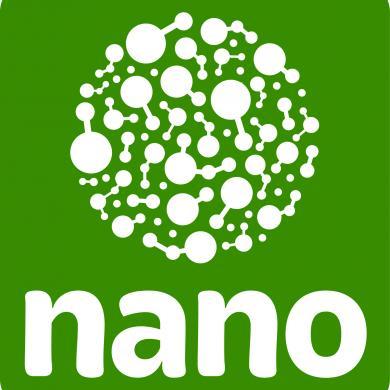DESCRIPTION
The audio description (AD) that accompanies the Nano exhibition was developed to increase access for visitors with low or no vision. It may also be able to support visitors with learning disabilities, and others for whom reading is challenging. The overall approach for this process is described as follows:
Goals:
- Make the experience accessible for visitors with low vision, and for blind visitors with a sighted companion (following American Council for the Blind’s definition of an audio description as an assistive technology)
- Help visitors understand and appreciate the exhibition’s most important messages Supplementary resources:
- Nano exhibition audio description is available at whatisnano.org/ad
- Audio description text available on whatisnano.org/ad in a format accessible to assistive technology readers
- Additional audio podcasts on nanoscience, engineering, and technology are available on whatisnano.org
Audio Files (English) (MP3)
- 1 Nano exhibition overview (3:06 minutes)
- 2 Small, smaller, nano (2:22 minutes)
- 3 Static vs. gravity (1:01 minutes)
- 4 What happens when things get smaller? (4:05 minutes)
- 5 Build a giant carbon nanotube (1:11 minutes)
- 6 What’s new about nano? (4:03 minutes)
- 7 Where can you find nano? (4:32 minutes)
- 8 Balance our nano future (1:50 minutes)
- 9 What does nano mean for us? (3:53 minutes)
Audio Files (Spanish) (MP3)
- 1 Resumen de la exhibición Nano (4:27 minutos)
- 2 Pequeño, más pequeño, nano (3:30 minutos)
- 3 Estática vs. gravedad (1:36 minutos)
- 4 ¿Qué sucede cuando las cosas se hacen más pequeñas? (6:17 minutos)
- 5 Construye un nanotubo de carbono gigante (1:59 minutos)
- 6 ¿Cuál es la novedad de nano? (6:17 minutos)
- 7 ¿Dónde puedes encontrar nano? (6:45 minutos)
- 8 Equilibra nuestro nanofuturo (2:32 minutos)
- 9 ¿Qué significa nano para nosotros? (5:43 minutos)
DESCRIPTION
The audio description (AD) that accompanies the Nano exhibition was developed to increase access for visitors with low or no vision. It may also be able to support visitors with learning disabilities, and others for whom reading is challenging. The overall approach for this process is described as follows:
Goals:
- Make the experience accessible for visitors with low vision, and for blind visitors with a sighted companion (following American Council for the Blind’s definition of an audio description as an assistive technology)
- Help visitors understand and appreciate the exhibition’s most important messages Supplementary resources:
- Nano exhibition audio description is available at whatisnano.org/ad
- Audio description text available on whatisnano.org/ad in a format accessible to assistive technology readers
- Additional audio podcasts on nanoscience, engineering, and technology are available on whatisnano.org
Audio Files (English) (MP3)
- 1 Nano exhibition overview (3:06 minutes)
- 2 Small, smaller, nano (2:22 minutes)
- 3 Static vs. gravity (1:01 minutes)
- 4 What happens when things get smaller? (4:05 minutes)
- 5 Build a giant carbon nanotube (1:11 minutes)
- 6 What’s new about nano? (4:03 minutes)
- 7 Where can you find nano? (4:32 minutes)
- 8 Balance our nano future (1:50 minutes)
- 9 What does nano mean for us? (3:53 minutes)
Audio Files (Spanish) (MP3)
- 1 Resumen de la exhibición Nano (4:27 minutos)
- 2 Pequeño, más pequeño, nano (3:30 minutos)
- 3 Estática vs. gravedad (1:36 minutos)
- 4 ¿Qué sucede cuando las cosas se hacen más pequeñas? (6:17 minutos)
- 5 Construye un nanotubo de carbono gigante (1:59 minutos)
- 6 ¿Cuál es la novedad de nano? (6:17 minutos)
- 7 ¿Dónde puedes encontrar nano? (6:45 minutos)
- 8 Equilibra nuestro nanofuturo (2:32 minutos)
- 9 ¿Qué significa nano para nosotros? (5:43 minutos)
OBJECTIVES
BIG IDEA
- Make the experience accessible for visitors with low vision, and for blind visitors with a sighted companion (following American Council for the Blind’s definition of an audio description as an assistive technology)
- Help visitors understand and appreciate the exhibition’s most important messages Supplementary resources:
- Nano exhibition audio description is available at whatisnano.org/ad
- Audio description text available on whatisnano.org/ad in a format accessible to assistive technology readers
- Additional audio podcasts on nanoscience, engineering, and technology are available on whatisnano.org
NANO CONTENT MAP
Nanometer-sized things are very small, and often behave differently than larger things do.
Scientists and engineers have formed the interdisciplinary field of nanotechnology by investigating properties and manipulating matter at the nanoscale.
Nanoscience, nanotechnology, and nanoengineering lead to new knowledge and innovations that weren't possible before.
Nanotechnologies—and their costs, utility, risks, and benefits—are closely interconnected with society and with our values.
DOWNLOAD FILES
- Nano Mini-exhibition Audiences host guide (PDF)
- Nano mini-exhibition audio description script text (PDF)
- Nano mini-exhibition audio description script text (DOC)
- Nano mini-exhibition audio description script text (Spanish and English) (PDF)
- Nano mini-exhibition audio description script text (Spanish and English) (DOCX)
- 1 Nano exhibition overview (MP3)
- 2 Small, smaller, nano (MP3)
- 3 Static vs. gravit (MP3)
- 4 What happens when things get smaller? (MP3)
- 5 Build a giant carbon nanotube (MP3)
- 7 Where can you find nano? (MP3)
- 6 What’s new about nano (MP3)
- 8 Balance our nano future (MP3)
- 9 What does nano mean for us? (MP3)
- 1 Resumen de la exhibición Nano (Spanish) (MP3)
- 2 Pequeño, más pequeño, nano (Spanish) (MP3)
- 3 Estática vs. gravedad (Spanish) (MP3)
- 4 ¿Qué sucede cuando las cosas se hacen más pequeñas? (Spanish) (MP3)
- 5 Construye un nanotubo de carbono gigante (Spanish) (MP3)
- 6 ¿Cuál es la novedad de nano? (Spanish) (MP3)
- 7 ¿Dónde puedes encontrar nano? (Spanish) (MP3)
- 8 Equilibra nuestro nanofuturo (Spanish) (MP3)
- 9 ¿Qué significa nano para nosotros?
Credits
Science Museum of Minnesota
Developed for the NISE Network with funding from the National Science Foundation under Award Numbers 0532536 and 0940143. Any opinions, findings, and conclusions or recommendations expressed in this product are those of the authors and do not necessarily reflect the views of the Foundation.
Creative Commons Attribution Non-Commercial Share Alike 3.0 United States (CC BY-NC-SA 3.0 US).
View more details

NISE Network products are developed through an iterative collaborative process that includes scientific review, peer review, and visitor evaluation in accordance with an inclusive audiences approach. Products are designed to be easily edited and adapted for different audiences under a Creative Commons Attribution Non-Commercial Share Alike license. To learn more, visit our Development Process page.



